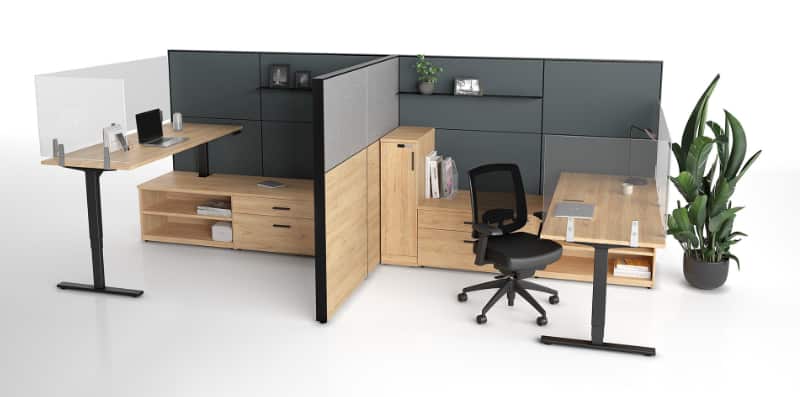Over the last year, the crystal balls have been working overtime for those interested in what our workplaces of the future will look like. Early on in the pandemic, with several large corporations announcing a commitment to remote working, it was clear that we were on the cusp of great change. Barring a few glitches early on, working from home initially worked well for most. Employee productivity was up, commutes were down, family time was maximized. Employers suddenly found they were saving vast sums of money when they were able to ditch their office space.
Since those early days, we have seen a settling of sorts. The pandemic has proven that WFH is feasible for many but not ideal for all. And as we continue to navigate the advantages and pitfalls of WFH, it is becoming clearer that most employers will still require a brick-and-mortar space but the size, structure, and layouts will be very specific to each business. Designs will encompass the needs and activities of the employees, fit within budgets that reflect a support of in-office and remote work, and will very likely draw the essence and comfort of our home office environments back into the workplace.
So, what does this mean in practical terms? Our crystal ball is telling us that the tone and feel of an office will be warmer and more residential. Collaborative areas will look more like living rooms. Spaces will be cultivated to allow for different working styles, different activities, different workers, all wrapped in a welcoming residential style but commercial-quality environment – ‘resi-mmercial’, if you will.
In a typical office, there will be a percentage of workers who will be there every day, and those people will have assigned work areas – offices, workstations, modified benching – imagine a traditional workspace with a warm feel.
Another group of workers will be in the office a few days per week and, frequently, their ‘in-office’ time will focus on meetings with colleagues and clients. Meeting areas of different sizes will be essential. Private, connected, and acoustically sound, they will provide the opportunity to collaborate in person – that essential component of our work that has been missing for most of us for so long.
These workers will still need space to work in between collaborations and meetings so comfortable, private, unassigned spaces will serve their needs. Options will vary but will likely include screened desking, and screened lounge seating with worksurfaces – little nooks of comfort and privacy to plug in and catch up. Open spaces with lounge seating and laptop tables will also be popular. We will be able to enjoy the comfort of a living room with the pleasure of our colleagues.
And lastly, there will be workers who rarely come to a physical office. These workers will require support from their employers to create safe and comfortable home work environments. And the physical office space will need to be prepared to support collaboration from a distance for small groups, teams, and full staff gatherings.
These ideas for space are not strikingly new but the manner of their implementation and the focus on true varied spaces – allowing for real differences in work, activity, personality, and company focus – will be guided by the individual businesses dedicated to creating new, and welcoming environments for their teams.
The key, moving forward, will be to strike the right balance in space planning and furniture design that will ensure inviting and functional spaces supporting the new ways we work and fostering success for all workers in the work they do.

